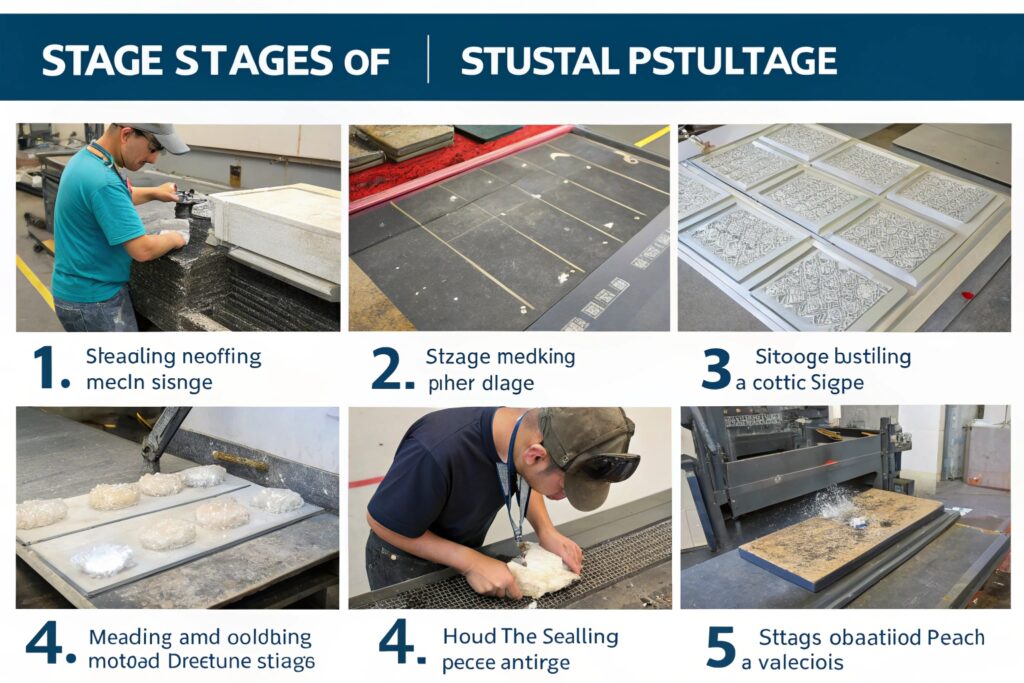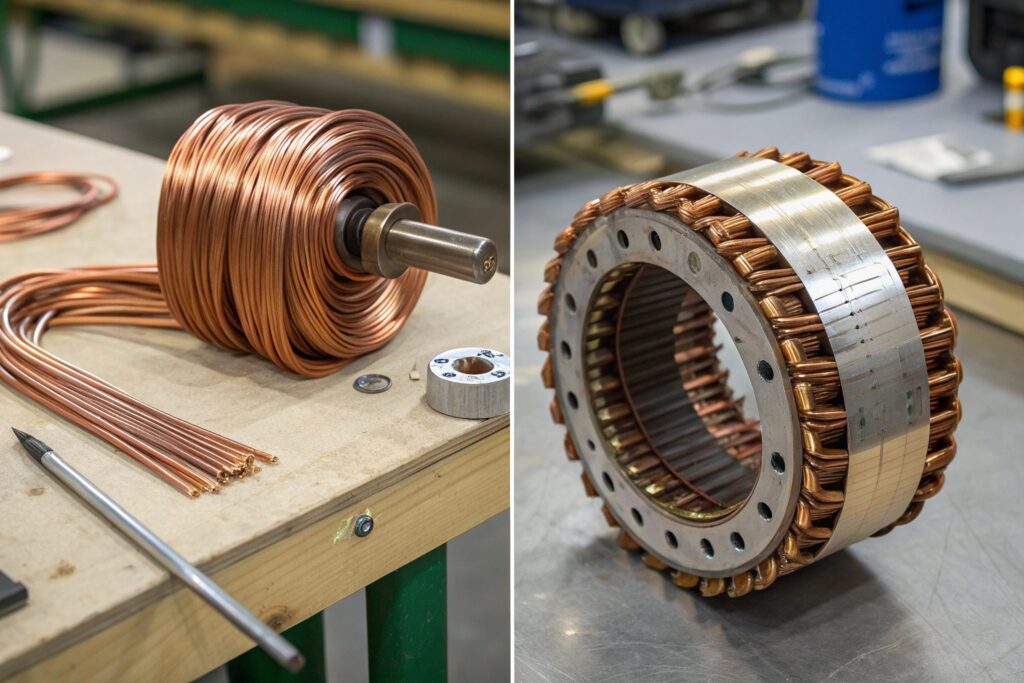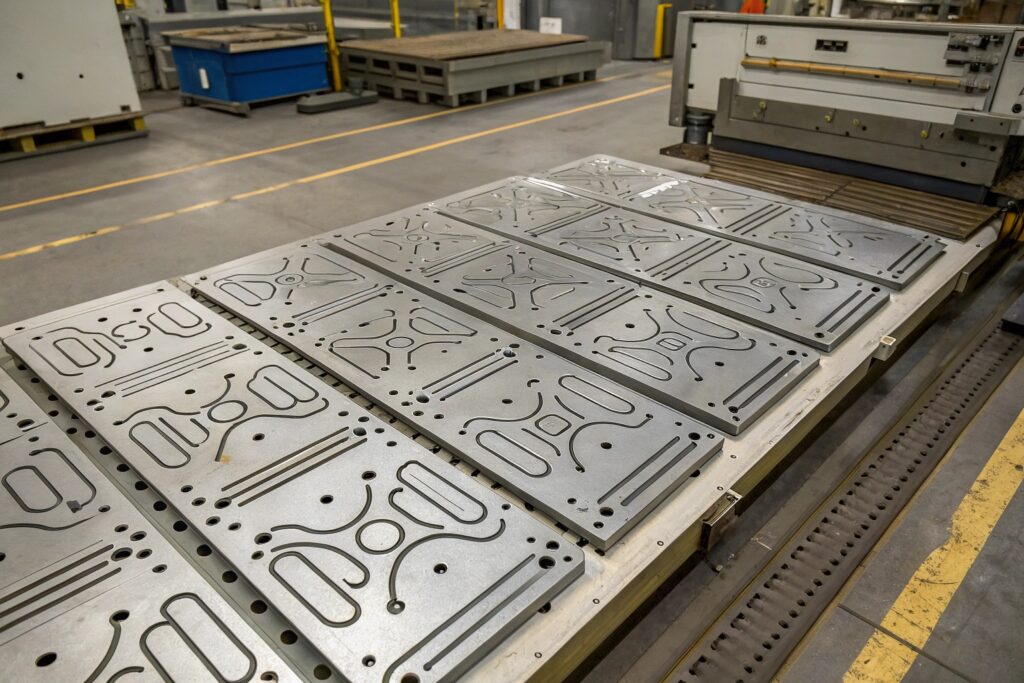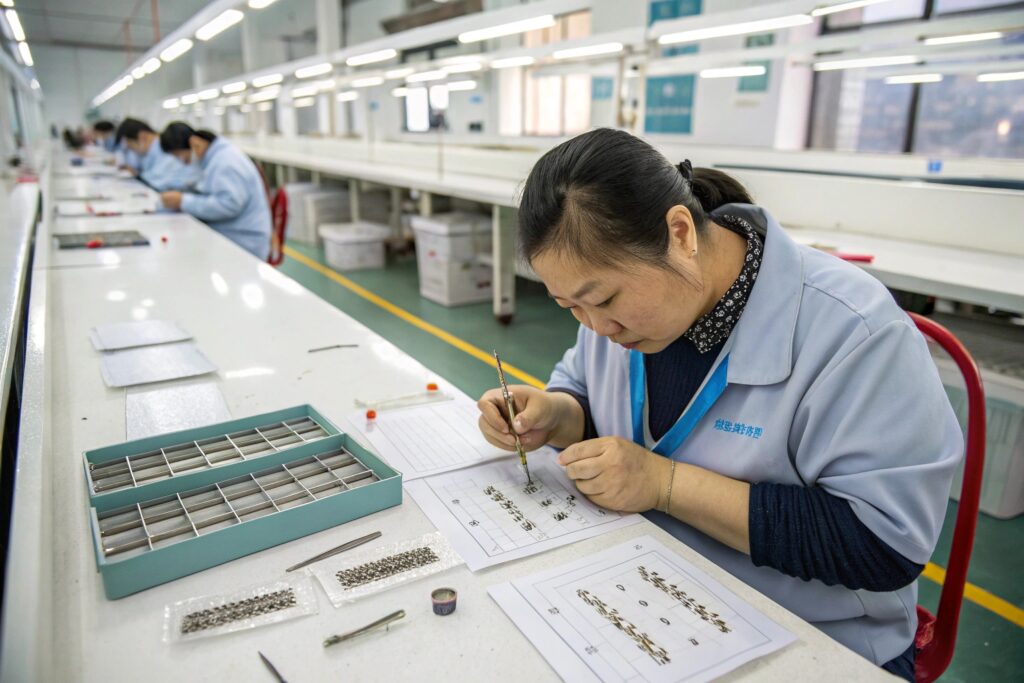Waiting weeks for hairpin samples? You’re probably losing customers and momentum. When factories outsource their sampling, every iteration adds delay—and cost. That’s where in-house sampling makes all the difference.
In-house sampling speeds up hairpin production by cutting communication time, reducing error rates, and allowing same-day adjustments—leading to faster launches and better designs.
At HairAcc, we don’t wait—we prototype in our own factory. This gives our clients an edge in fast-moving accessory markets.
What is the process of hairpin winding?
While "hairpin winding" usually refers to motor coils, in the hair accessory world, the process of producing and finishing a decorative hairpin requires several manual and semi-automated steps.
Hairpin production involves material cutting, shaping, polishing, detailing, and finishing, all of which benefit from real-time sampling and quality control.

Our Hairpin Sampling Process
Here’s how our in-house system works at HairAcc:
| Step | Description |
|---|---|
| Design Review | Confirm size, color, decoration |
| Material Cut | Brass, acrylic, or alloy rods |
| Bending/Polishing | Shaped by mold or hand |
| Decorative Addition | Add pearls, enamel, or engraving |
| Finish Quality Check | Surface inspection, paint curing |
| Sample Dispatch | Final sample sent to client in 24–72 hours |
Having these processes under one roof eliminates back-and-forth delays with third-party sample makers.
Why It Matters
Every time we create a new hairpin prototype internally, we reduce client waiting time by up to 10 days. It also gives us tighter control over quality, material use, and cost estimates.
What is the hairpin technology for stators?
Interestingly, "hairpin technology" also appears in industrial terms like motor coil manufacturing. In the context of motors, this technology increases winding density and performance. But for us, the lesson is in precision and structural integrity.
Hairpin stator technology teaches us the importance of uniformity, bend accuracy, and insulation—principles we apply to making precise and elegant hairpins.

Applying Industrial Precision to Fashion Accessories
Although our products are decorative, we apply similar principles:
| Industrial Hairpin Focus | Our Hairpin Factory Approach |
|---|---|
| Precise Bending | CNC molds for metal shaping |
| Insulated Materials | Coated and lacquered pin surfaces |
| Dimensional Accuracy | Same-day in-house mold adjustment |
| Thermal Tolerance | Heat-set decorative adhesives |
In stators, the wrong bend can ruin a motor. In fashion, the wrong curve ruins the elegance. That’s why we prototype quickly and correct on-site.
What is the fill factor of a hairpin winding?
In motors, "fill factor" describes how efficiently copper occupies the slot area—basically, how much space is used versus wasted. In hairpin production, we don’t calculate copper density, but we do care about design-to-material efficiency.
The “fill factor” equivalent in our factory relates to how efficiently a hairpin’s shape uses the metal material to create a stable, elegant look with minimal waste.

How We Maximize Efficiency in Design
By handling sampling ourselves, we test how the following design elements affect efficiency:
- Length-to-strength ratio: Shorter pins need denser bends
- Bend angles: Less waste with optimized curves
- Weight: Heavier pins need ergonomic balance
- Finish type: Matte coatings hide minor shape flaws
We simulate small-batch production during sampling to determine the best balance of form and function.
What is the fill factor of winding?
This again circles back to efficiency, which is crucial in any production process. In hairpin design, we calculate something similar—how much of the decorative surface is visible, useful, or wasted due to shape or detailing errors.
In-house sampling allows us to physically measure design efficiency, catching design gaps early and adapting before mass production—improving yield and profitability.

Sampling = Higher Fill Factor, Better Output
Let’s compare two projects:
| Project Type | External Sampling | In-House Sampling |
|---|---|---|
| Sample Delivery | 10–14 days | 1–3 days |
| Cost per Sample | $50–$100 | $0–$30 |
| Design Iterations | 2–3 (slow) | 5–6 (fast) |
| Mass Defect Rate | 10% | <3% |
When we make samples in-house, we discover flaws early. That means fewer surprises in bulk production. That’s why many of our buyers stick with us after their first order.
Conclusion
In-house sampling isn’t just about saving time—it’s about precision, control, and smarter design execution. At HairAcc, our hairpin clients enjoy faster revisions, lower costs, and better quality because we own our sampling process. That’s the power of keeping production under one roof.









